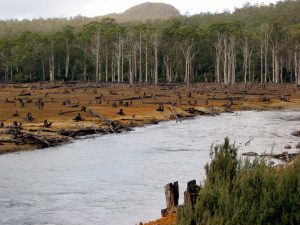 Interestingly, biodiversity misfortunes from unsettling influences brought about by people will in general be progressively serious and longer-enduring. People their yields, and their nourishment creatures take up an expanding portion of Earth’s territory region. Half of the world’s livable land has been changed over to horticulture, and about 77 percent of agrarian land is utilized for nibbling by steers, sheep, goats, and other animals. This enormous change of woods, wetlands, prairies, and other earthbound environments has delivered a 60 percent decay (by and large) in the quantity of vertebrates around the world. Noticed that up to one million plant and creature species are confronting elimination because of human exercises.
Interestingly, biodiversity misfortunes from unsettling influences brought about by people will in general be progressively serious and longer-enduring. People their yields, and their nourishment creatures take up an expanding portion of Earth’s territory region. Half of the world’s livable land has been changed over to horticulture, and about 77 percent of agrarian land is utilized for nibbling by steers, sheep, goats, and other animals. This enormous change of woods, wetlands, prairies, and other earthbound environments has delivered a 60 percent decay (by and large) in the quantity of vertebrates around the world. Noticed that up to one million plant and creature species are confronting elimination because of human exercises.
Backwoods clearing, wetland filling, stream diverting and rerouting, and street and building development are frequently part of a methodical exertion that delivers a considerable change in the environmental direction of a scene or a district. As human populaces develop, the earthbound and sea-going biological systems they use might be changed by the endeavors of people to discover and deliver nourishment, adjust the scene to human settlement, and make open doors for exchanging with different networks for the reasons for building riches. Biodiversity misfortunes normally go with these procedures.
Analysts have recognized five significant drivers of biodiversity misfortune:
- Habitat misfortune and corruption—which is any diminishing, discontinuity, or decimation of a current common environment—decreases or kills the nourishment assets and living space for most species. Species that can’t relocate are frequently cleared out.
- Invasive species—which are non-local species that essentially alter or disturb the biological systems they colonize—may outcompete local species for nourishment and environment, which triggers populace decreases in local species. Intrusive species may show up in new regions through common movement or through human presentation.
- Overexploitation—which is the reaping of game creatures, fish, or different life forms past the limit with respect to enduring populaces to supplant their misfortunes—brings about certain species being drained to exceptionally low numbers and others being headed to eradication.
- Pollution—which is the expansion of any substance or any type of vitality to the earth at a rate quicker than it very well may be scattered, weakened, deteriorated, reused, or put away in some innocuous structure—adds to biodiversity misfortune by making medical issues in uncovered life forms. Now and again, presentation may happen in portions sufficiently high to slaughter by and large or make conceptive issues that compromise the species’ endurance.
- Climate change related with a dangerous atmospheric devation—which is the alteration of Earth’s atmosphere brought about by the consuming of petroleum derivatives—is brought about by industry and other human exercises. Petroleum product burning produces ozone harming substances that upgrade the environmental assimilation of infrared radiation (heat vitality) and trap the warmth, affecting temperature and precipitation designs.
Biologists stress that territory misfortune (regularly from the transformation of woodlands, wetlands, fields, and other normal regions to urban and agrarian utilizations) and obtrusive species are the essential drivers of biodiversity misfortune, yet they recognize that environmental change could turn into an essential driver as the 21st century advances. In a biological system, species resilience points of confinement and supplement cycling forms are adjusted to existing temperature and precipitation designs. A few animal groups may not ready to adapt to natural changes from a dangerous atmospheric devation. These progressions may likewise give new chances to intrusive species, which could additionally include to the burdens species attempting to adjust to changing natural conditions. Every one of the five drivers are emphatically impacted by the proceeded with development of the human populace and its utilization of common assets.
